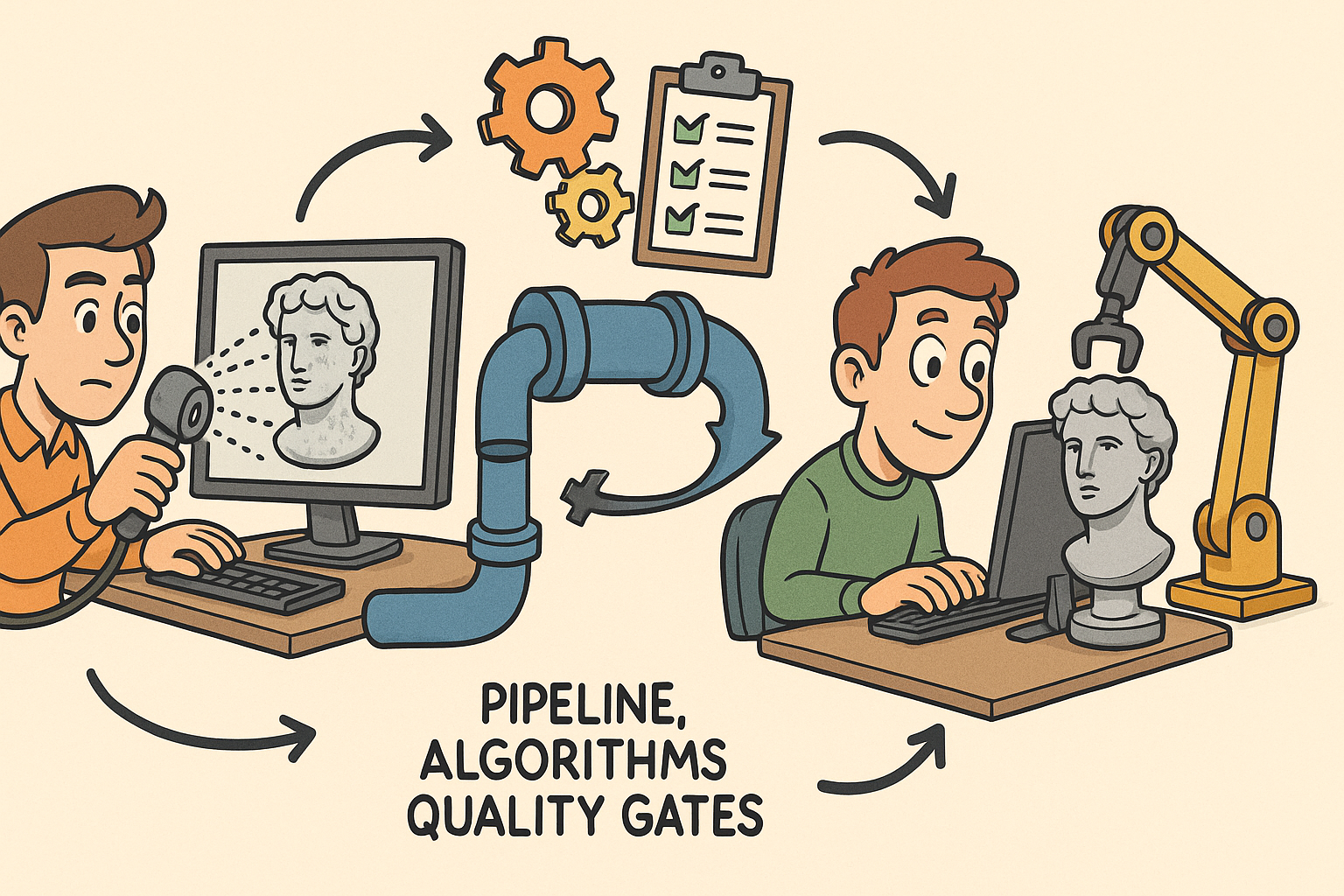Your Cart is Empty
Customer Testimonials
-
"Great customer service. The folks at Novedge were super helpful in navigating a somewhat complicated order including software upgrades and serial numbers in various stages of inactivity. They were friendly and helpful throughout the process.."
Ruben Ruckmark
"Quick & very helpful. We have been using Novedge for years and are very happy with their quick service when we need to make a purchase and excellent support resolving any issues."
Will Woodson
"Scott is the best. He reminds me about subscriptions dates, guides me in the correct direction for updates. He always responds promptly to me. He is literally the reason I continue to work with Novedge and will do so in the future."
Edward Mchugh
"Calvin Lok is “the man”. After my purchase of Sketchup 2021, he called me and provided step-by-step instructions to ease me through difficulties I was having with the setup of my new software."
Mike Borzage
Harnessing Revit: 5 Advanced Integration Techniques to Elevate Design Coordination and Efficiency
August 12, 2025 6 min read


Introduction
In contemporary delivery models, design and construction are no longer linear hand-offs; they are intertwined feedback loops that demand constant, simultaneous input from architecture, structure, MEP, construction management, and facility management. Autodesk Revit, when configured for integrated workflows, supplies the connective tissue that keeps every discipline working from the same live dataset instead of stale exports. This article examines five advanced Revit integration capabilities that demonstrably boost coordination quality, shorten design–build timelines, and slash avoidable RFIs.
Cloud Worksharing with Autodesk BIM Collaborate Pro
The move from local file servers to Autodesk Construction Cloud is arguably the most transformative shift in project coordination. By hosting RVT files in cloud hubs, designers and consultants open, edit, and synchronize without geographic constraint, thereby embracing a genuinely parallel workflow. Because models reside in a replicated, enterprise-grade data center, read/write operations occur with negligible downtime and without the dreaded “someone else has the file open” message that once paralyzed design teams.
Every save creates an immutable historical snapshot, allowing teams to roll back to any prior moment in a matter of seconds. That temporal transparency is complemented by integrated Compare and Change Visualizer utilities that graphically mark added, removed, and modified elements—annotated with author and timestamp metadata. Discipline leads no longer sift through transmittal emails; the system itself tells them what shifted in last night’s deliverable.
Fine-grained permission layers ensure proprietary content—such as cost codes or fabrication details—remains visible but non-editable to outside parties. Architects can lock families that encapsulate intellectual property, while still giving structural partners enough context to route beams or shear walls correctly. This balance between privacy and visibility underpins the single source of truth philosophy that cloud worksharing enforces.
- Concurrent editing eliminates file-locking bottlenecks and the need for cloned “working copies.”
- Automatic versioning removes the risk of data corruption during peak deadline pushes.
- Change visualization lets project managers audit scope drift without opening each model.
The cumulative effect is a culture shift: coordination happens in real time, not during weekly “model swaps.” Time normally lost to manual file management is reallocated to design refinement, advancing both quality and schedule.
Linked Model Coordination & Discipline-Aware Visibility Controls
Revit’s linking paradigm advocates referencing partner RVT files instead of duplicating content. With that philosophy, architects can observe structural framing in context, yet structural engineers retain authoritative ownership of beams, columns, and foundations. Geometry flows one way—via links—while control remains with the originator. This approach reduces redundant editing and keeps file sizes manageable because large assemblies do not balloon into every collaborator’s model.
View templates further tune visibility. Architectural plans may display only structural grids and load-bearing walls, whereas structural drawings suppress architectural entourage. Worksets offer another filtration layer, letting MEP consultants gray out electrical fixtures when plumbing coordination is under review. Team members see precisely what adds value to their task and nothing more, minimizing visual noise.
Copy/Monitor constitutes the watchdog that ensures critical datum—levels, grids, and selected fixtures—stay synchronized. When an architect shifts a level by 150 mm, Revit flashes an alert in the structural model at next reload. Coordination Review harvests these notifications into a dialog where responsible parties accept changes, postpone them, or flag disagreements. The software becomes an active mediator, not a passive repository.
- Linked models avoid re-creating data and keep discipline responsibilities explicit.
- Worksets and templates enforce context-specific visibility without overwriting source files.
- Copy/Monitor plus Coordination Review transform potential clashes into structured tasks.
By preserving ownership boundaries yet exposing essential geometry, Revit curtails expensive miscommunication. The outcome is lighter models, clearer accountability, and accelerated approvals between disciplines.
Shared Coordinates & Point-Cloud Integration for Site Alignment
Site discrepancies are among the costliest errors to correct once construction mobilizes. Revit’s shared coordinate system establishes a project-wide spatial contract so every file—civil, architectural, structural, fabrication—agrees on origin, rotation, and elevation. Designers publish the survey point to external consultants using DWG or IFC exchange, enabling them to author upstream infrastructure (roads, utilities, topography) in Civil 3D or InfraWorks with zero positional drift.
The project base point, meanwhile, can float for internal convenience, allowing teams to model prefabrication modules at a user-friendly coordinate while still referencing the survey control for site placement. When files aggregate in Navisworks or ACC Model Coordination, tolerances are evaluated against a common datum, not a patchwork of reference frames.
Integrating laser-scanned point clouds reinforces this alignment. Large renovation projects frequently ingest millions of points captured by terrestrial scanners. Revit’s Recap-processed clouds anchor to shared coordinates so new steel or ductwork aligns with existing structure down to millimeter precision. Field crews subsequently rely on total station exports derived from the same coordinate set, closing the loop between design, verification, and installation.
- Geospatial accuracy ensures underground utilities and structural footings fit without on-site redesign.
- Point-cloud backdrops validate clearances, reducing RFIs that stem from undocumented as-built conditions.
Uniform coordinates and reality capture therefore collapse uncertainty between the virtual model and the physical site, transforming clash detection from a conceptual exercise into a reliable predictor of constructability.
Interoperable Analysis & Simulation Bridges
Design intent only matures when stress-tested against structural loads, energy metrics, and constructability timelines. Revit’s analytical bridges expedite that cycle by exporting discipline-specific models without manual remodeling. Structural engineers generate an analytical wireframe and push it directly to Robot, Etabs, or SAP2000 with member sizes and load combinations intact. Revisions—say, a deeper beam to dampen vibrations—flow back to Revit through round-trip mapping, updating every hosted element from dimensions to material take-offs.
On the MEP front, duct and pipe networks send flow data to Insight and Green Building Studio for thermal and daylight simulations. When results flag hotspots or over-ventilation, designers tweak system parameters in Revit and rerun the analysis within the same day. Fabricators access identical geometry through CAMduct or Revit Fabrication Parts, generating spools and nesting sheets free from redraw errors.
For holistic coordination, Navisworks acts as the federated hub. Revit exports NWC files overnight through automated tasks; Navisworks then performs clash tests, 4D Gantt sequencing, and 5D cost aggregation. The rules-based clash testing engine surfaces only priority conflicts—such as ducts vs. beams over a critical corridor—reducing “noise” clashes that waste review time. Identified issues link back to Revit IDs, enabling one-click zoom to the offending element.
- Single-click exports eliminate “tear-down and rebuild” workflows for analysis software.
- Associative links preserve design history, supporting rapid iteration.
- Automated clash detection standardizes QC processes across multiple authoring platforms.
Interoperability thus amplifies expertise: each discipline continues to rely on best-in-class analysis tools while Revit maintains the cohesive, parametric backbone for coordinated documentation.
Dynamo & Revit API-Driven Data Automation
Even with robust linking, thousands of parameters still require population, verification, and transfer among disparate data environments. Dynamo’s visual scripting democratizes automation by letting non-programmers traverse multiple models, filter elements, and rewrite parameters without opening dozens of views. A typical routine extracts room numbers from the architectural file, matches them to MEP equipment, and populates schedules used for commissioning.
Custom nodes extend this power: bi-directional handshakes with Excel authorize field engineers to adjust flow rates from a spreadsheet, while JSON endpoints broadcast status updates to asset-management platforms. When more intricate logic is necessary—say, pushing COBie keys to meet owner handover requirements—the Revit API provides full access. Developers compile add-ins that trigger upon saving; if a clash tolerance is exceeded, an automated Teams webhook alerts the offending discipline lead.
Open-source packages such as Rhynamo and Konrad Krainer’s MEPover dissolve ecosystem barriers. Designers can exchange complex NURBS surfaces with Rhino or leverage Grasshopper’s generative algorithms, then re-import meshes or parameters into Revit without losing associative metadata. This freedom transforms Revit into a central data broker, rather than a closed garden.
- Dynamo scripts erase repetitive tasks—sheet creation, parameter mapping, and QA flags.
- API hooks promote continuous compliance with BIM execution plans and owner data standards.
- Programmable automation harmonizes data hand-offs from concept through facility management.
By embedding logic directly into the model environment, teams enforce data quality at the source, preventing downstream conflicts and elevating overall project intelligence.
Conclusion
Integrated cloud worksharing, linked coordination, geospatial alignment, analytical bridges, and data automation together establish a resilient collaboration ecosystem where information flows predictably and transparently. Adopting every feature at once can feel daunting, so teams often pilot one enhancement per phase—cloud worksharing during schematic design, linked coordination for design development, shared coordinates before construction documents, analytical bridges during tender, and automation scripts for as-built and FM deliverables. Each incremental step generates measurable ROI, building confidence for deeper integration.
Looking ahead, many firms are now exploring Autodesk Forge to aggregate these capabilities into web-based dashboards that visualize cross-discipline KPIs—clash counts, schedule variance, embodied carbon—in real time. Regardless of future tooling, the principles remain constant: keep data centralized, maintain clear ownership, validate early and often, and automate wherever human labor adds no creative value.
Also in Design News

From Raw Scans to Manufacture-Ready Geometry: Pipeline, Algorithms, and Quality Gates
December 08, 2025 13 min read
Read More
Design Software History: Numerical Robustness in Geometry Kernels: History, Failure Modes, and Engineering Playbook
December 08, 2025 13 min read
Read More
Cinema 4D Tip: Reusable Cinema 4D Camera Rig Presets for Faster Shot Setup
December 08, 2025 2 min read
Read MoreSubscribe
Sign up to get the latest on sales, new releases and more …


